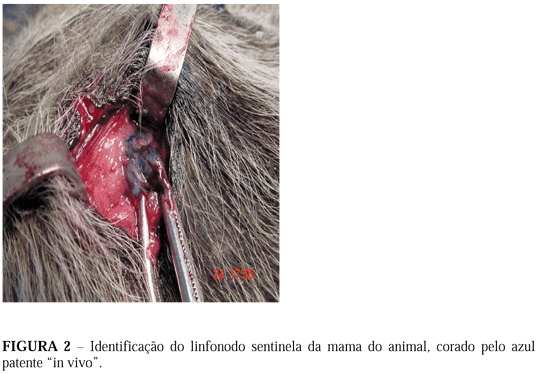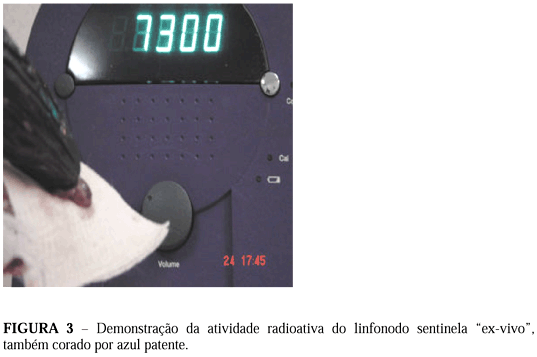The sentinel lymph node research (SLN) has been effective in the evaluation of nodal status in patients with breast cancer. A negative SLN makes an axillary lymphadenectomy unnecessary. PURPOSE: To identify the SLN of the subareolar region in female dog breasts using blue dye (BD), Technetium (Tc99m) or the association of both techniques and to compare their sensibility in the detection of the SLN. METHODS: Seventeen female dogs were studied. 55 breasts were analyzed. DB and/or Tc99m were used for the identification of SLN. Tc99m was introduced two hours before the experiment. BD was introduced some minutes before the procedure. Once the SLN was localized its dissection was performed. RESULTS: From all 44 lymph nodes in which BD was used, 40 were colored (90,90%). Tc99m was used in 48 lymph nodes and 47 of them were radioactive (97,91%) (BD vs Tc99m: p=0.18; k= - 0.067). BD and Tc99mwere associated in 37 lymph nodes, although 02 lymph nodes were not colored, all of them were radioactive (100%)(BD vs BD+Tc99m: p=0.12; k=0.083; Tc99m vs BD+ Tc99m: p=1.0; k=0.018). CONCLUSION: Tc99mand BD isolated or in association, were effective in the identification of the SLN in the female dog breasts studied.
Sentinel lymph node; Breast neoplasms; Surgery; Models, animal



